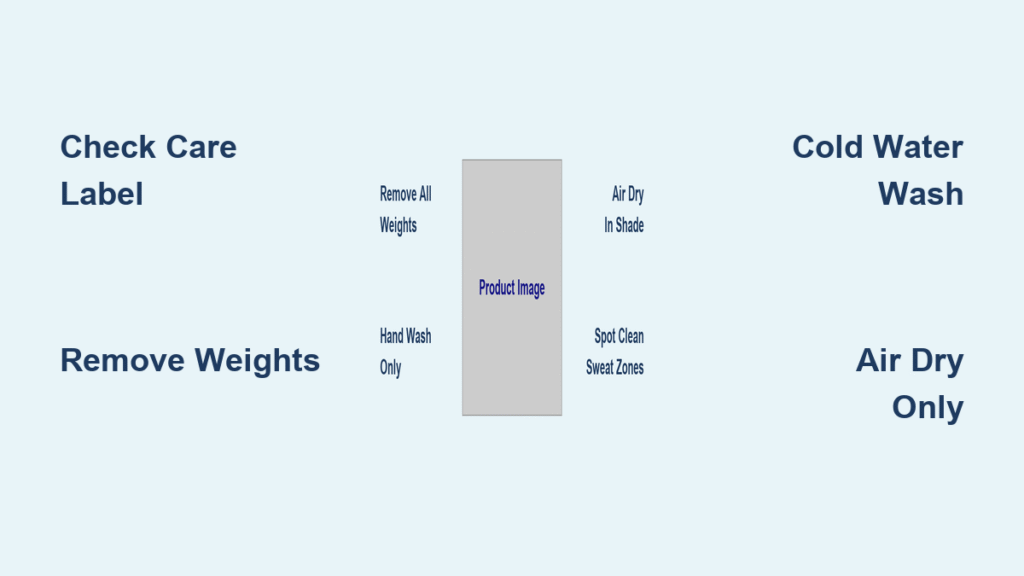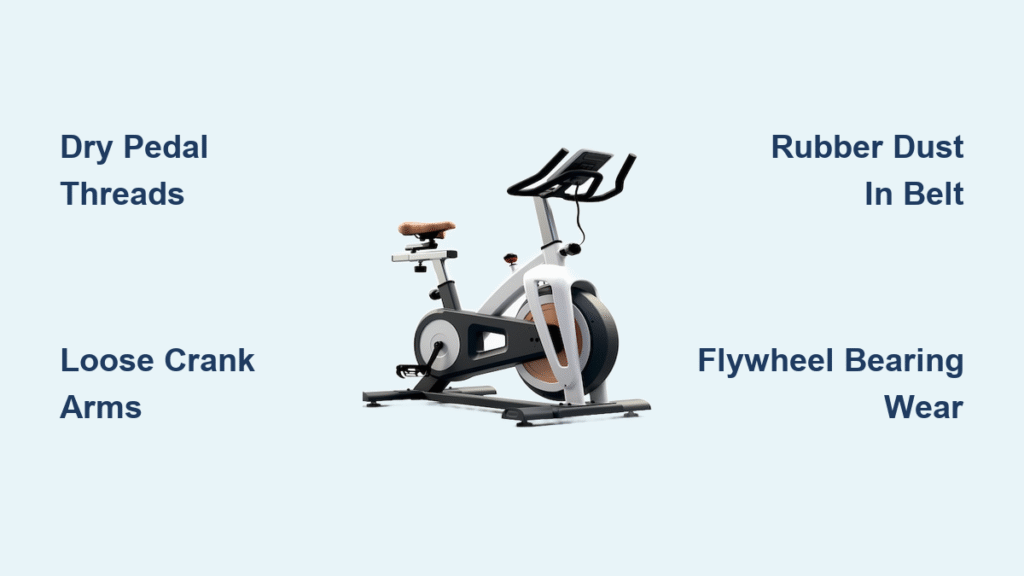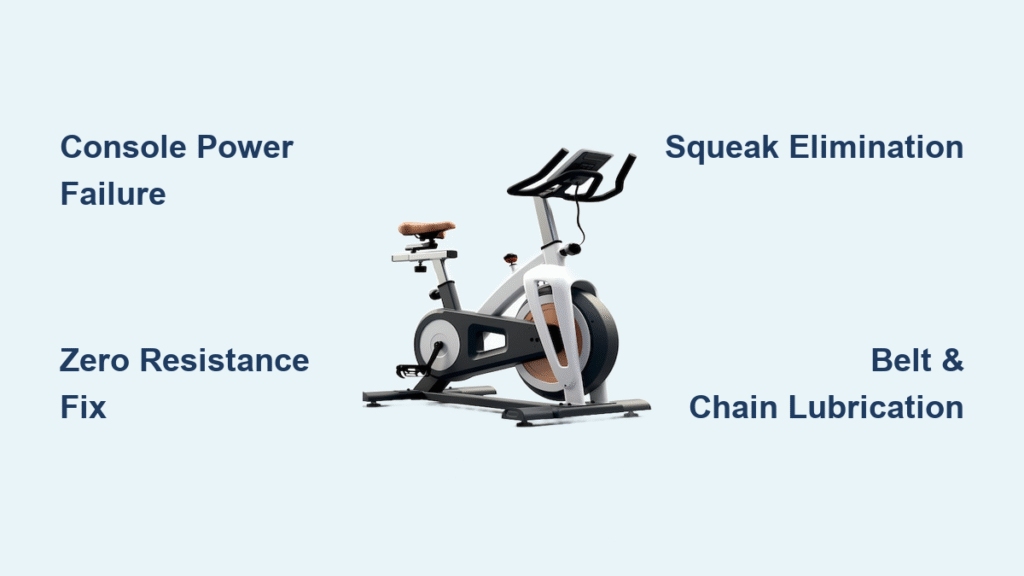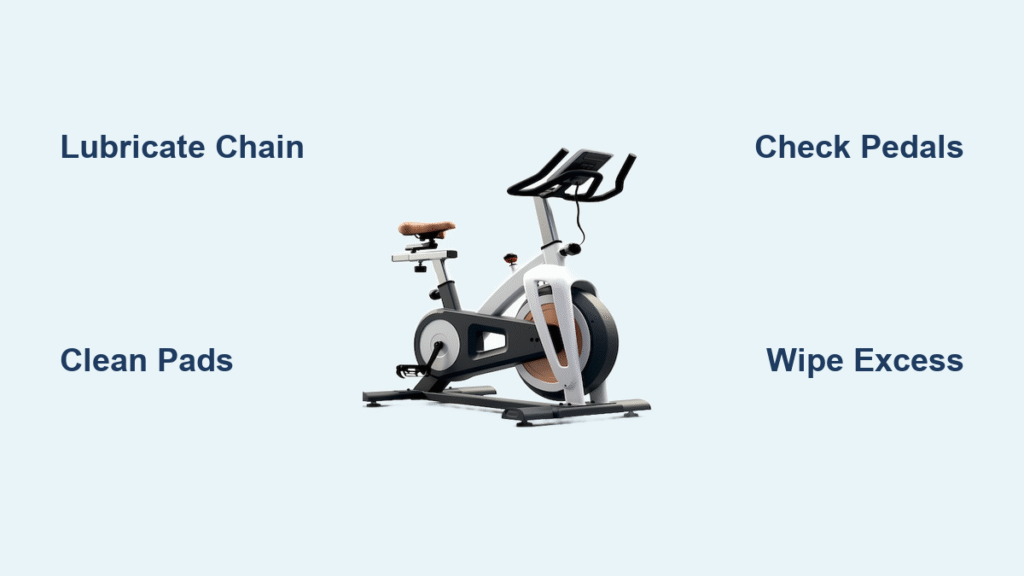That stale gym-bag smell clinging to your weighted vest? It’s not just unpleasant—it’s a red flag for bacteria buildup that can trigger skin irritation and degrade your equipment. Sweat-soaked padding creates the perfect breeding ground for odor-causing microbes, and skipping proper cleaning shaves years off your vest’s lifespan. Most athletes wait until stains appear or the stench becomes unbearable, but by then, the damage is often irreversible. This guide delivers battle-tested methods to safely wash your weighted vest, banish stubborn odors, and maintain peak performance. Whether you’re training for military fitness tests or adding resistance to daily runs, you’ll learn exactly how to clean your vest without compromising its structural integrity.
Ignoring vest hygiene leads to more than embarrassment—research shows unwashed athletic gear harbors bacteria like Staphylococcus that cause rashes and infections. The good news? With the right techniques, you can restore freshness in under 30 minutes and extend your vest’s life by 2-3 years. Let’s dive into the precise steps to make your weighted vest workout-ready again.
Pre-Cleaning Safety Steps Before Touching Water
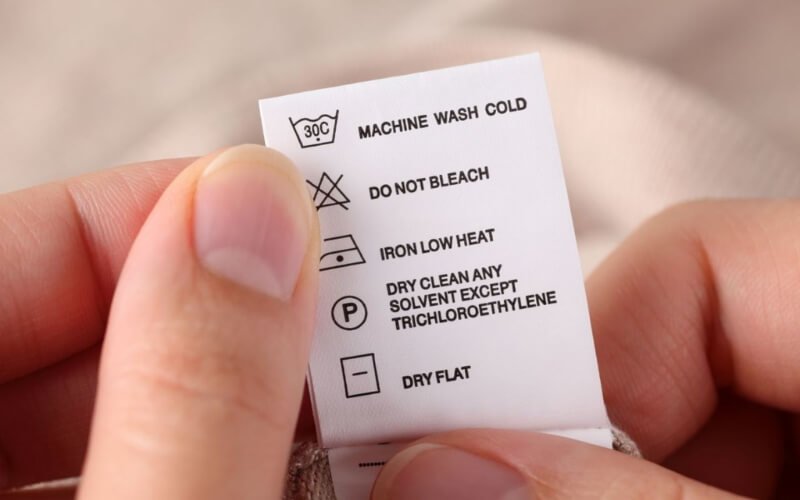
Check Manufacturer’s Care Label First
Your vest’s care label holds critical instructions that override generic advice. Some vests contain heat-sensitive adhesives, waterproof coatings, or specialty fabrics like neoprene that react poorly to standard detergents. For example, OMORPHO G-Vests explicitly prohibit submersion due to their stainless steel ball bearings, while nylon-polyester blends tolerate gentle washing. Always locate this label—typically sewn inside a weight pocket—and verify if machine washing, specific detergents, or water temperatures are approved. Skipping this step risks melting adhesives, shrinking fabrics, or voiding warranties.
Remove Every Weight Component Immediately
Strip out all metal plates, sandbags, or polymer weights before any cleaning begins. Water exposure causes metal weights to rust rapidly, while trapped moisture in sandbags breeds mold. Place weights on a towel-lined surface away from cleaning areas—never leave them sitting in water. This step also reduces the vest’s weight by 50-100 pounds, making it manageable during washing. For vests with sewn-in weights (like some OMORPHO G-Wear models), skip this but double-check your care label for special instructions.
Identify Fabric Composition and Weak Points
Run your hands over the vest to assess material types and stress zones. Neoprene and polyester blends handle water well but develop mildew if not dried properly, while leather straps require spot cleaning only. Note frayed seams, cracked padding, or worn stitching—these areas need extra-gentle handling. Pay special attention to weight pocket seams and strap attachment points, as aggressive scrubbing here can unravel stitching under load. This assessment determines whether you can safely hand wash or must stick to spot cleaning.
Spot Cleaning Quick Method for Sweat Buildup
When Spot Cleaning Solves 80% of Odor Problems
Use this technique after every 2-3 workouts to prevent deep-set odors. It’s ideal for vests with non-removable weights or delicate materials like the OMORPHO G-Vest. Focus on high-sweat zones: the chest panel, shoulder straps, and waistband where bacteria thrive. By addressing moisture immediately, you avoid the need for full washing between sessions.
Spot Cleaning Protocol in 5 Minutes:
– Mix 1 tsp mild detergent (like Woolite) with 1 cup cold water
– Dip microfiber cloth—not paper towels—into solution
– Blot (don’t rub) interior surfaces where skin contacts fabric
– Target armpit areas and necklines with circular motions
– Wipe residue with damp clean cloth
– Air dry 30 minutes before storage
Critical Mistakes That Ruin Your Vest
Never soak fabric completely during spot cleaning—excess water seeps into padding, trapping moisture against weights. Avoid bleach or abrasive cleaners that degrade moisture-wicking properties. Most importantly, don’t scrub logos or reflective strips; the OMORPHO G-Wear’s polymer weights can detach if agitated. If you notice color bleeding during spot tests, switch to a vinegar-water solution (1:4 ratio).
Hand Washing Deep Clean for Weekly Maintenance
Cold Water Preparation to Preserve Fabric
Fill a bathtub with cold water (below 86°F/30°C)—heat melts adhesives holding weights in place and shrinks elastic fibers. Add 2 tbsp pH-neutral detergent, swirling gently to avoid suds buildup. Never use fabric softener; it coats fibers and attracts more bacteria. For neoprene vests, add ½ cup white vinegar to neutralize odors without harsh chemicals.
Complete Hand Wash Process Step-by-Step
- Submerge fully and press out air pockets—avoid dunking if weights are sewn in
- Soak 15 minutes max to loosen grime without saturating padding
- Scrub problem areas using soft toothbrush: focus on sweat-prone zones from top to bottom
- Rinse 3x in fresh cold water until runoff runs clear
- Press out water with towels—never twist or wring
- Reshape while damp to maintain structural integrity
Hot water is the #1 cause of vest failure—it warps metal grommets and dissolves glue in weight pockets. Stick to cold water even for heavily soiled vests.
Machine Washing Only When Explicitly Approved
Safe Machine Wash Conditions Checklist
Only attempt machine washing if your care label states it’s safe (common for OMORPHO G-Wear but forbidden for G-Vests). Verify these conditions:
– All weights completely removed
– Cold water setting selected
– Gentle/delicate cycle chosen
– Vest placed inside mesh laundry bag
– No bleach or fabric softener added
Post-Wash Immediate Actions to Prevent Mildew
Remove the vest within 5 minutes of cycle completion—leaving it in the drum breeds mildew in 20 minutes. Shake out water droplets and hang immediately. For OMORPHO G-Wear, turn garments inside-out during washing to protect polymer weights. Never skip the mesh bag; it prevents straps from tangling and tearing.
Brand-Specific Protocols to Avoid Costly Errors
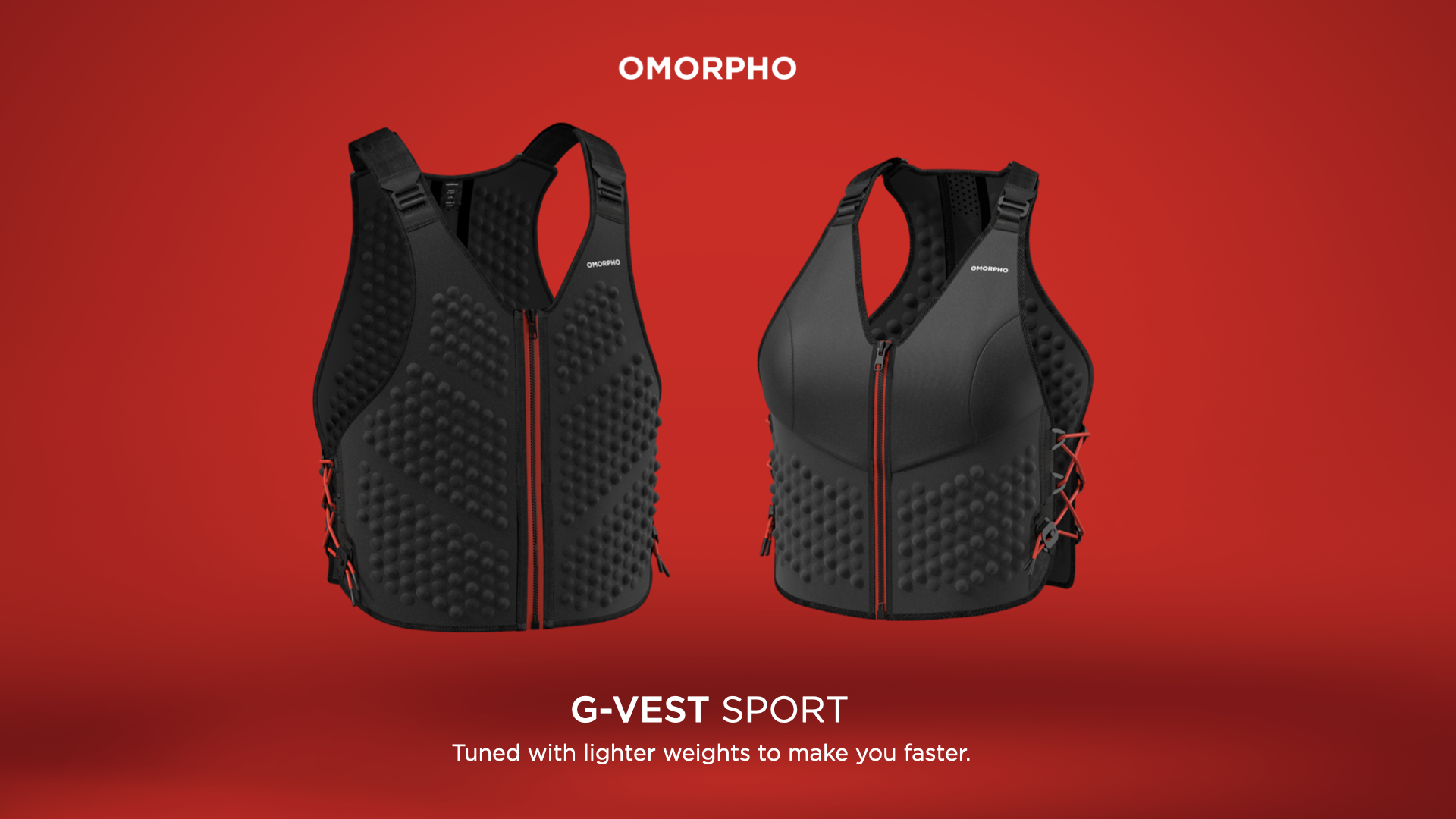
OMORPHO G-Vest Steel Bearing Safety Rules
This vest’s stainless steel ball bearings cannot get wet. Submersion causes rust that damages G-spheres and voids warranties. Instead:
– Spot clean with damp microfiber cloth after each use
– Hose down exterior with cold water stream (avoid seams)
– Hang in shade—never direct sun—to drip dry
– Store weights separately in dry container
OMORPHO G-Wear Polymer Weight Care
Since these vests use abrasion-resistant polymer weights:
– Air dry 30 minutes post-workout before washing
– Use performance-fabric detergent like HEX
– Skip fabric softener—it clogs moisture-wicking fibers
– For stubborn odors: soak 20 minutes in 1:4 vinegar-water solution
Odor Elimination That Actually Works
Baking Soda Overnight Treatment for Deep Odors
Sprinkle ¼ cup baking soda inside the vest, zip all pockets, and let sit 8+ hours. The alkaline powder neutralizes acidic sweat compounds. Shake vigorously outdoors the next morning—never wear while residue remains. This works for all vest types, including non-submersible models.
Vinegar Soak for Severe Gym Smells
For vests that smell after washing:
1. Mix 1 cup white vinegar with 4 cups cold water
2. Submerge interior panels for 25 minutes
3. Rinse 3x with cold water
4. Air dry completely—the vinegar scent disappears when dry
Avoid this on leather components; test on hidden areas first.
Drying Without Warping or Mildew
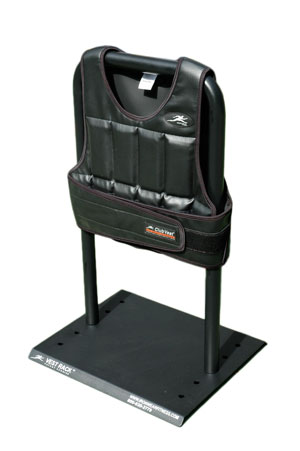
Air Drying Timeline by Material Type
- Nylon/polyester vests: 6-8 hours on drying rack
- Neoprene vests: 18-24 hours hanging away from heat
- Hybrid materials: 12 hours minimum—never rush
Lay flat for vests with sewn-in weights; hang by shoulder straps for removable-weight models. Use fans to circulate air—but keep them 3+ feet away to avoid blowing dust onto damp fabric.
Dryer Dangers That Melt Adhesives
Machine dryers—even on “air fluff”—generate enough heat to melt glue in weight pockets. One user reported $200 in damage after a “low-heat” cycle warped metal plates. Always air dry; the 12-24 hour wait preserves your investment.
Storage Habits for Long-Term Gear Health
Post-Workout Routine to Prevent Odors
After every session:
1. Unfasten all straps to release trapped moisture
2. Hang on wide wooden hanger (not wire)
3. Place in ventilated room—never gym bag
4. Store weights in mesh bag for airflow
Long-Term Storage Checklist
- Wipe interior with vinegar solution before storing
- Keep in breathable cotton bag—not plastic
- Store in climate-controlled space (avoid garages)
- Re-inspect monthly for hidden mildew
Troubleshooting Odors and Damage
When Odors Persist After Washing
If baking soda and vinegar fail:
– Check weight pockets for mold—clean with cotton swab
– Increase spot cleaning to daily for heavy sweaters
– Replace if odors remain after 3 deep cleans (fabric is compromised)
Fixing Stains Without Fabric Damage
For yellow armpit stains:
1. Blot with cold water immediately post-workout
2. Pre-treat with diluted detergent (1:10 ratio)
3. Scrub gently with soft toothbrush
4. Never use bleach—it weakens fibers
Weekly Maintenance Schedule for Daily Users
Daily and Weekly Cleaning Checklist
- After each workout: Spot clean sweat zones + air dry 30 mins
- Every 3 days: Baking soda treatment for odor-prone vests
- Weekly: Full hand wash (cold water + mild detergent)
- Monthly: Inspect seams and weight pockets for wear
Skipping weekly cleaning cuts vest lifespan in half. A $200 vest maintained properly lasts 4+ years; neglected ones fail in under 18 months.
Final Takeaway: Never soak your weighted vest without verifying care instructions—water exposure can destroy $200+ investments in minutes. For most vests, weekly hand washing with cold water and monthly baking soda treatments banish odors permanently. The 10-minute post-workout air-dry ritual prevents 90% of problems. Start today: hang your vest properly after reading this, and you’ve already extended its life. Your skin (and next workout) will thank you.

